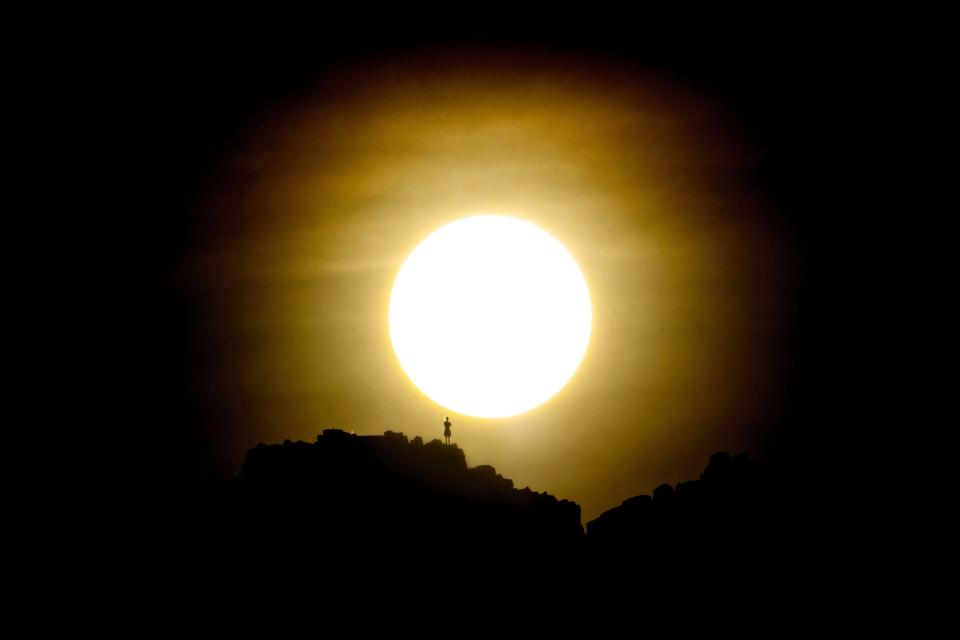A break from the heat: When does summer officially end?
Whether it's the slow descent into earlier nightfall or an escape from the record-breaking temperatures of summer, fall is always something Arizona residents are longing for during the peak of summer. So, when will autumn officially begin this year?
The summer solstice, signaling the beginning of summer, fell on June 21, 2023, in Arizona. Just around three months later, the autumnal equinox will occur in Arizona on Sept. 22 around 11:50 p.m. signaling to residents that relief from burning temperatures has arrived.
So, as we enter into another week of record-breaking temperatures, here's what you need to know about the slowly impending end of summer.
When is the last day of summer?
In the Northern Hemisphere, the autumnal equinox falls around Sept. 22 which can sometimes fluctuate by a couple of days due to leap years. This year, we can expect fall to begin on Sept. 22 meaning our last day of summer will be on Sept. 21.
The equinox is designated as one of the two times of the year when Earth's axis is tilted neither toward nor away from the sun, resulting in almost an equal amount of daylight and darkness at all latitudes, according to the National Weather Service. This definition is known as the astronomical start of the season.
Yet, there is another way to categorize the beginning of fall and that is the meteorological start to the season which is based on the annual temperature cycle and the 12-month calendar. With this definition, each season begins on the first of a particular month and lasts for three months meaning summer will end on August 31 and fall will start on Sept. 1, according to The Old Farmer’s Almanac.
Climate scientists and meteorologists created this definition to make it easier to keep records of the weather, but the cycle of the sun places the start date of the season much later in the month.

When will temperatures cool?
With a late start for monsoons and a record-breaking heatwave ongoing almost all of July, this summer in Arizona has been brutal with residents craving an escape from the 115-degree days.
This is an ongoing trend as Arizona summers often exceed 100 degrees with July and August being particularly hot. On brand with the nickname "Valley of the Sun," Arizona weather starts getting warm as soon as late May and grips on, not dipping into 90 degrees or lower until well into September or October.
The National Weather Service forecasts that the average time Phoenix breaks into less than 100-degree weather is around Sept. 20. Last year, due to a record-breaking monsoon season, Phoenix reached temperatures under 100 degrees a couple of times in August, notably hitting 97 on August 31 and continuing that streak with a high of 95 into Sept. 1.
Although in 2022, on Sept. 22, the high was 103 degrees, the temperatures cooled as low as 80 degrees the following week.
As for this year, the only estimate as to when we will break 100 degrees depends on that daily average calculation which predicts a high of 99 degrees on Sept. 20. The averages show that temperatures in the lower-mid 90s range would not appear until October.
It is possible we could see lower temperatures before September if heavy monsoon storms rolled into the Valley, but the season has been predicted to be drier than average, according to National Weather Service Phoenix meteorologist Chris Kuhlman.
Is Sept. 22 an equal amount of day and night?
Just about.
During the autumnal equinox, the Earth's axis is tilted neither toward nor away from the sun meaning the sun will rise exactly due east and set exactly due west and should be overhead the equator at noon. This would mean the day is directly split in half, with 12 hours of day and 12 hours of night.
The Earth's axis tilts the northern hemisphere toward the sun in June and away from the sun in December, making those solstices the longest and shortest days of the year. The equinoxes in September and March are the times when the axis is perfectly aligned in the middle.
Unfortunately, the hours will not be split perfectly even due to refraction of sunlight which causes the sun to appear above the horizon when the actual position of the sun is below the horizon. At higher latitudes, the days become a little longer because it takes the sun longer to rise and set, according to the National Weather Service.
Last year, the autumnal equinox fell on Sept. 22 and Phoenix experienced 12:08 hours of daylight and 11:52 hours of darkness, according to data from the Astronomical Applications Department of the U.S. Naval Observatory.
Why is it called the autumnal equinox?
The word equinox is derived from two Latin words - aequus (equal) and nox (night) which directly describes the occurrence seen twice a year during the start of fall and spring.
The autumnal equinox, which always falls between Sept. 21 and Sept. 24, is one of two equinoxes. The other, known as the vernal equinox or March equinox, occurs each year between March 19 and March 21 and marks the start of spring in the northern hemisphere.
On these two days, the day is split by nearly an exact equal 12 hours of daylight and darkness.
This article originally appeared on Arizona Republic: When does fall start 2023? Here's when Phoenix will start cooling down

